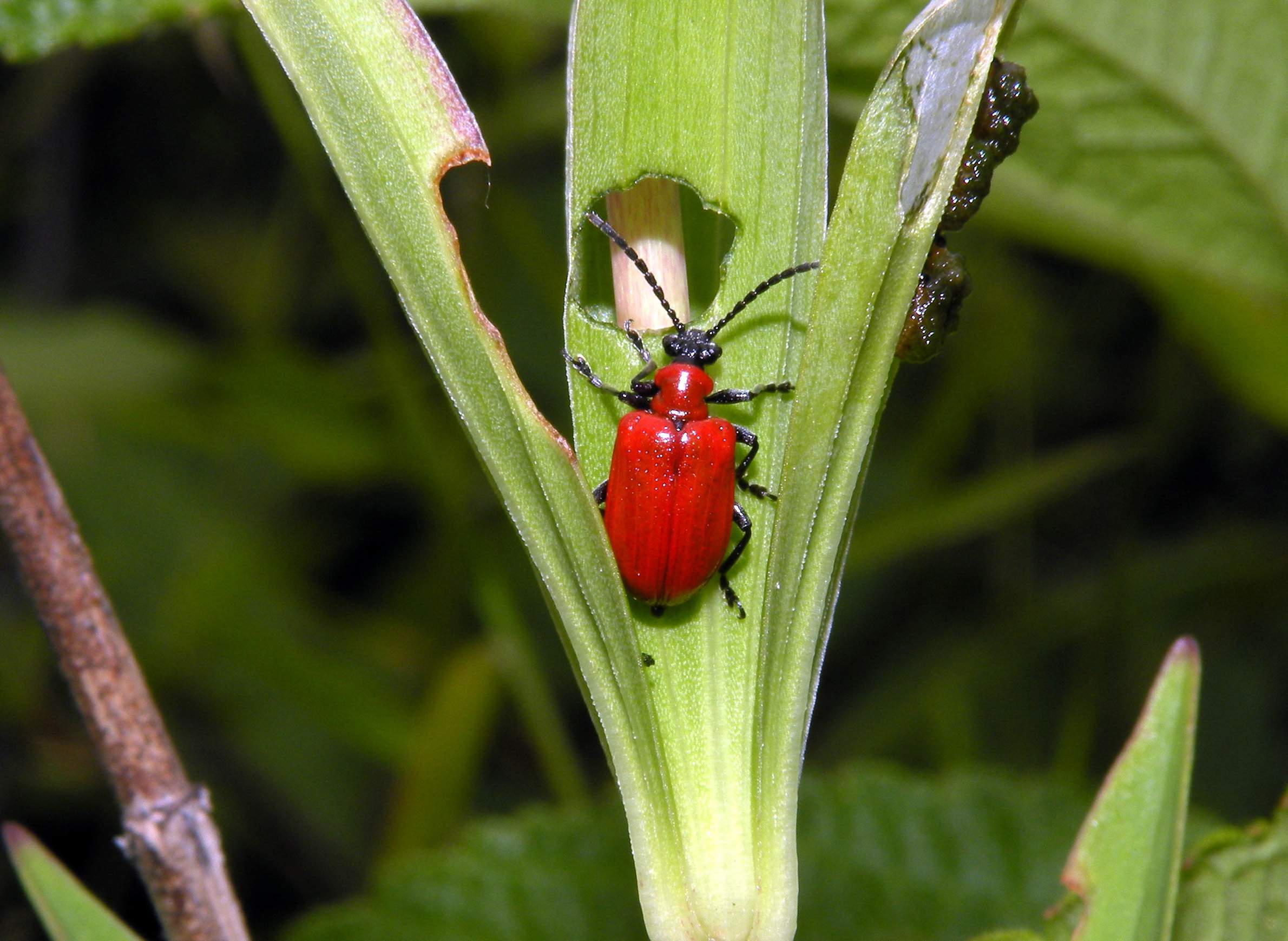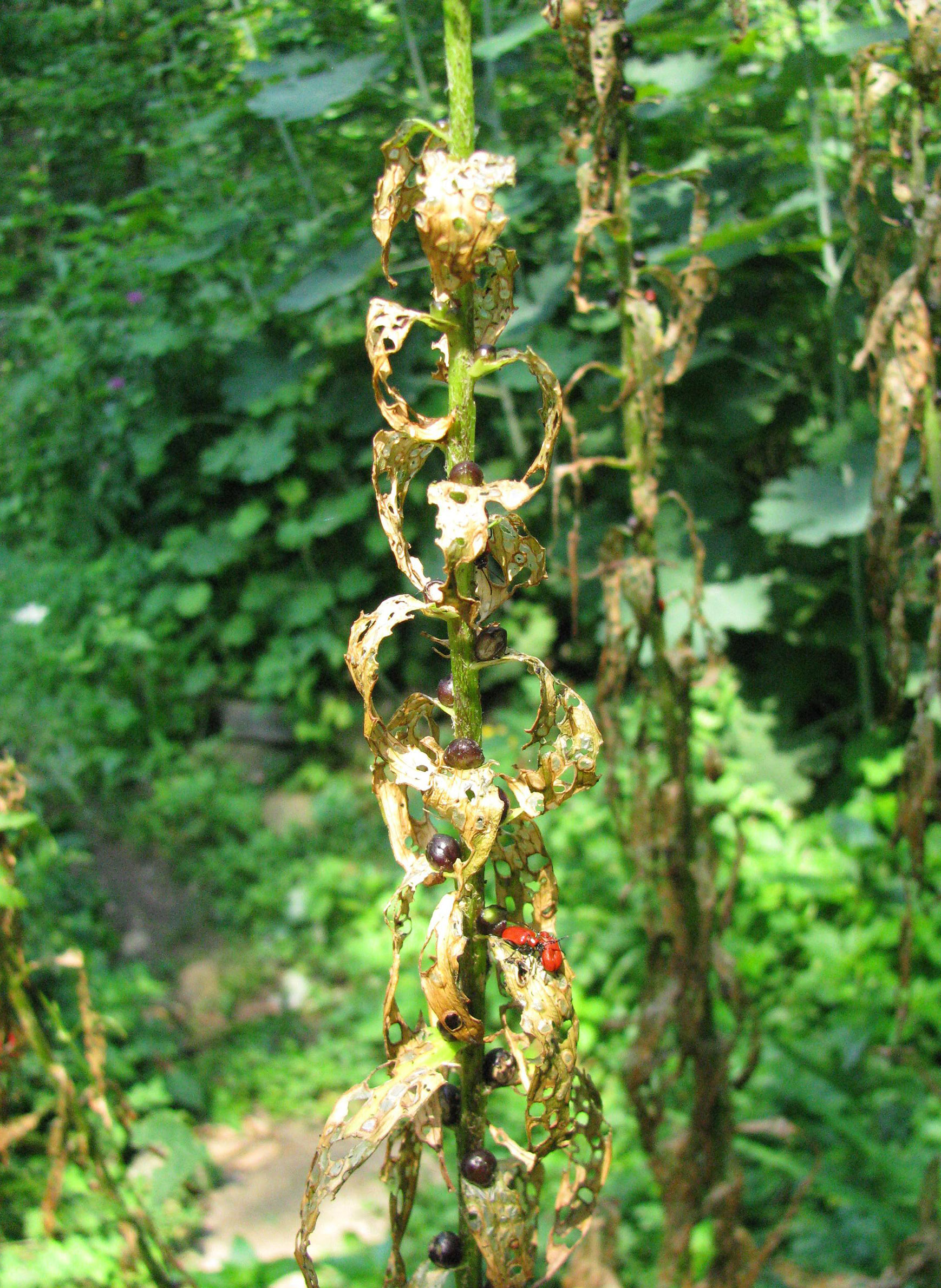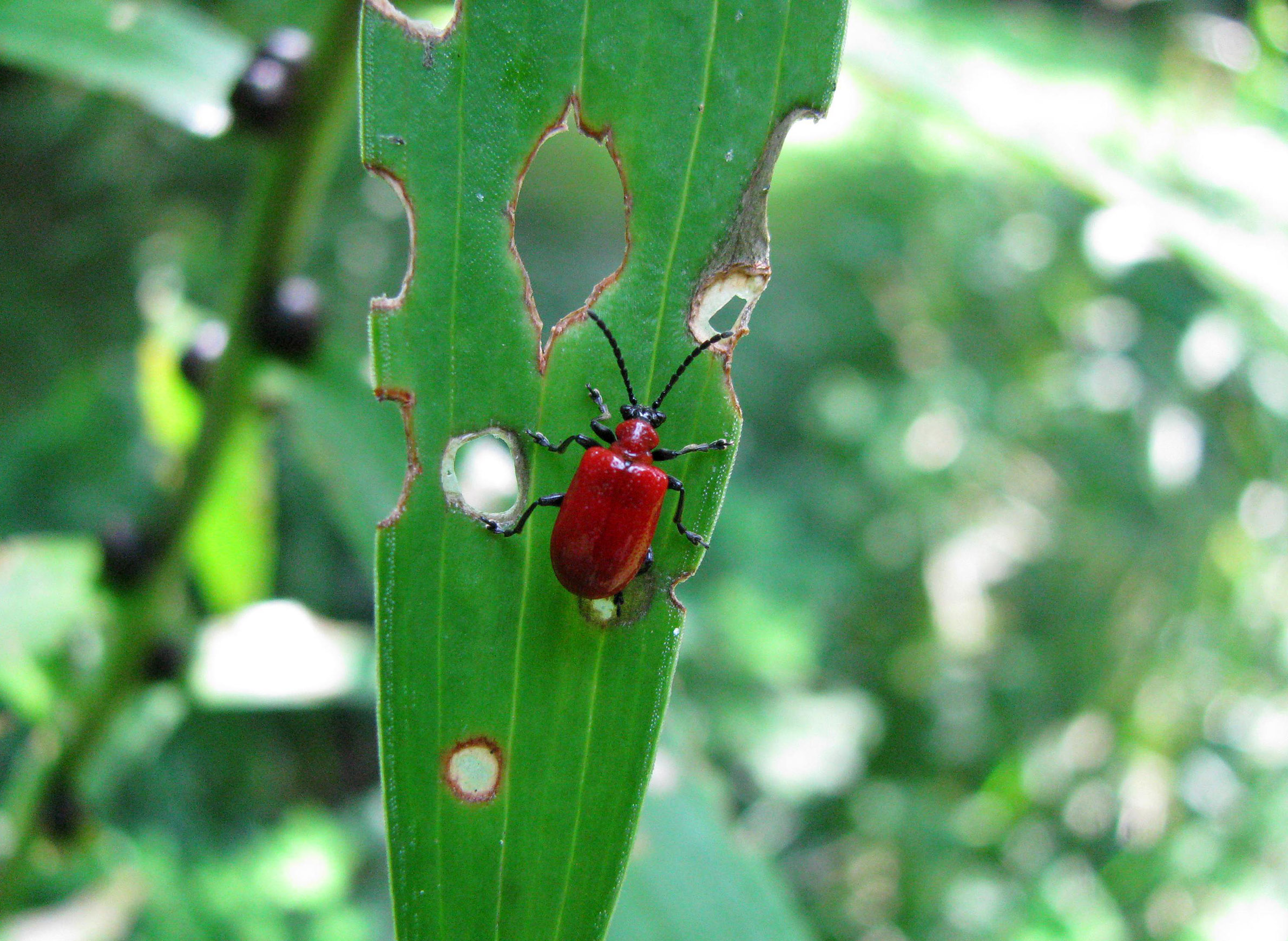
The Lily Leaf Beetle Jumps To New Footholds Across Wisconsin

It's been a big year for the lily leaf beetle in Wisconsin. Also called the scarlet lily beetle (Lilioceris lilii), this invasive Eurasian insect made its first appearance in the state back in 2014. This species originally showed up in North America around the time of World War II, arriving in eastern Canada with shipments of plant materials. It eventually spread into New England in the 1990s and has been moving westward ever since.
True to its name, the lily leaf beetle has a fondness for lilies and can cause significant damage to true lilies (Lilium spp.), including both native lilies and cultivated types. The insect can also attack fritillaries (Fritillaria spp.), as well as lily of the valley (Convallaria majalis) and Solomon's seal (Polygonatum spp.) to lesser extents. However, daylilies (Hemerocallis spp.), canna lilies (Canna spp.), and calla lilies (Calla palustris) are not attacked.
The damage lily leaf beetle infestations cause can be severe. Since its arrival in Wisconsin roughly five years ago, some commercial flower growers in parts of the state have stopped growing and selling lilies altogether.
Adult lily leaf beetles are only about a quarter-of-an-inch long but pack a punch when they chew irregular holes and notches in lily leaves, stems and developing buds.
If there's a redeeming quality of this invasive insect, though, at least the adults are a conspicuous bright red color and are easy to spot. However, when disturbed, these beetles readily tumble from plants and land upside down on the ground where they play dead. Their dark-colored underside makes them much more difficult to see when this occurs.
If it weren't for their destructive nature, one might even consider the vibrant red beetles rather pretty.
It's hard to say the same of the larvae though. Lily leaf beetle larvae are a pale yellowish color with a black head capsule and approach nearly half an inch long. However, as a defensive behavior, the larvae typically camouflage themselves with their own excrement and look more like slimy greenish slugs or ooey-gooey animal droppings than insects. Just like the adults, the larvae cause significant damage as they chew holes and notches in lilies.
While pests like the Japanese beetle don't make their appearance until well into summer, the lily leaf beetle can be a threat throughout the entire growing season.
This insect overwinters in the adult stage and the bright red beetles can emerge and start feeding early in the spring. After mating, female lily leaf beetles lay tiny reddish eggs on the underside of leaves. Eggs are often laid in batches of a dozen or fewer, but the long-lived females can lay hundreds of eggs in their lifetimes.
The emerging larvae start feeding and can be common during spring and early summer. After gorging themselves for a few weeks, larvae eventually wander from plants to pupate in the soil. The next batch of adults will be present through the summer and fall months.
For those Wisconsinites who haven't encountered this insect yet, it's not too surprising. The majority of the state has yet to see the lily leaf beetle — but that will likely change in the coming years.
When it was first detected in the Wausau area in 2014, lily leaf beetle was found nearly simultaneously in a number of spots around Marathon County, suggesting that it may have been spread by the movement of infested plant materials. Human movement of these insects remains an important factor today. Since its introduction, the lily leaf beetle has steadily been spreading around central Wisconsin through both human and natural movement.
Alarmingly, in the summer of 2019, the lily leaf beetle made some significant "jumps" and was detected in Dane and Door counties. In early October, the Wisconsin Department of Agriculture, Trade and Consumer Protection confirmed the first detection of this species in Pierce County. This disconnected pattern on the map points to human movement as a likely cause.
Unfortunately, these detections represent new footholds in Wisconsin and residents of those areas now need to be on alert for this invasive beetle.





